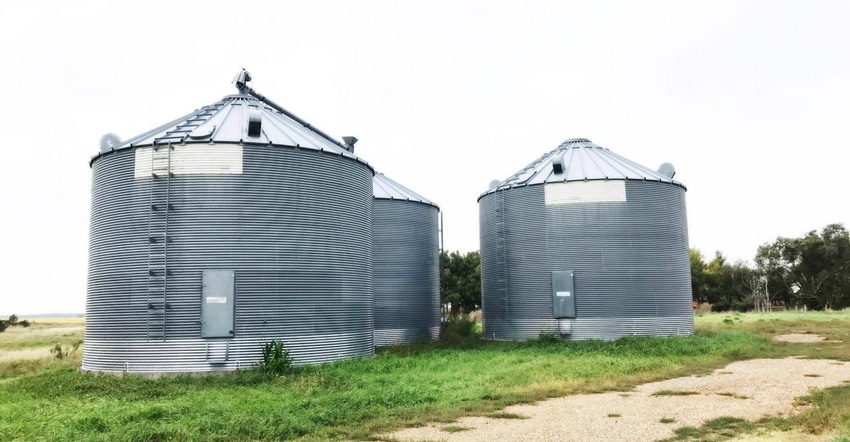Practicing farm safety: Be alert & take your time
When it comes to staying safe on the farm or ranch, it’s always better to err on the side of caution.
February 21, 2020

Last week, Tyler and I headed south to the Nebraska Cattlemen’s Classic in Kearney with two consignment bulls in tow. We spent four days in Nebraska, and along the way, I spoke six different times at various agricultural meetings.
Needless to say, it was a crazy, whirlwind week, and I practically missed the memo that Feb. 16-22 was National Grain Bin Safety Week.
Although the annual reminder has passed, I would be remiss not to talk about it because this is such an important topic.
While we were on the road, we heard news of a 27-year old farmer who died in a grain bin accident in South Dakota. His tragic death joins a growing list of similar accidents in my area, which largely may be due to the extremely wet corn that was put in bins last fall.
South Dakota Governor Kristi Noem promoted National Grain Bin Safety Week by recalling her own father’s death from a grain bin accident.
“He did something that he told us kids to never do,” Noem said in a candid conversation with USDA Secretary Sonny Perdue. “He climbed into the grain bin to break up some chunks of the crust and that was the last time anybody in our family saw him.”
According to Purdue University, 370 people died in the last decade from grain bin entrapment accidents. It’s recommended that farmers use a safety rope and a spotter if entry into a grain bin is necessary.
Life on the farm can be a beautiful thing, but one small lapse in judgment can be a matter of life and death.
And not only are we seeing headlines about grain entrapment accidents in the news, but we are headed into the peak of spring calving season soon, and now is as good of a time as any to remind folks to be careful when handling mama cows with fresh babies at their sides.
You may think you’re spry and quick enough to get out of the way if a cow starts snorting in your direction. However, it’s always better to err on the side of caution and not get into her space as she follows her instincts to protect her baby.
So what do you do if you need to work with a calf before it heads back to the pasture with its mom?
Don’t skip the little things that could really make a difference in keeping you safe during calving season.
Having a calf catch on hand is always a good idea. Weigh and tag the calf in a place where there’s some protection. This may be in the box of the pickup truck, on the other side of the fence or in a barn or some other area where she isn’t sniffing down the back of your neck while you’re working with the new calf.
Sure, you may think that all your mama cows are perfectly docile, but all it takes is one bad day and one bad moment to put you in critical danger.
So whether it’s maintaining field equipment, working cattle, handling pharmaceuticals, driving the tractor or any other task that seems mundane as you do it day-in and day-out, it’s imperative that you take your time, always follow safety protocols and never take short-cuts or think you’re the exception to the rule in these scenarios.
Be safe out there by being mindful, aware, alert and on-guard. You’re too valuable and important to lose, so let this blog be a good reminder to us all to follow through on these safety guidelines all year long.
The opinions of Amanda Radke are not necessarily those of beefmagazine.com or Farm Progress.
About the Author(s)
You May Also Like




.png?width=300&auto=webp&quality=80&disable=upscale)
